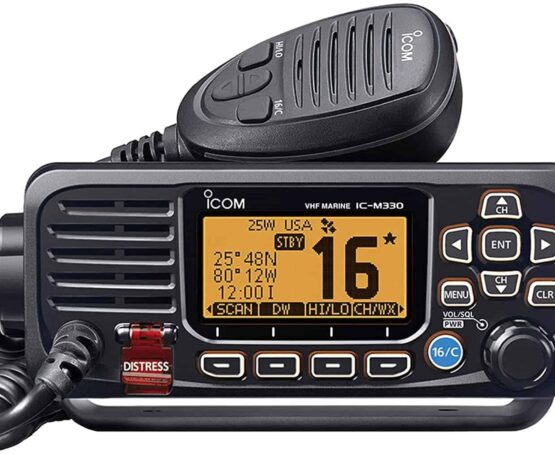As one sails east down the coast of Maine, communication options start to decline as cellphone reception and WiFi connections become spotty or non-existent. Coverage is decent close to the coast but decreases the further one travels offshore. One can significantly enhance cellphone coverage with a signal booster. For example waveform.com/pages/cell-phone-signal-booster-guide
Given cellphone limitations, marine VHF radio increases in importance as a reliable communications tool. It is essential to become familiar with the potential DSC VHF radios have to offer for both communications and safety.
At least two people on board should know how to use the VHF. Having emergency VHF radio scripts at hand is helpful. Many modern chart plotters have emergency VHF scripts available at the push of the SOS or Emergency button. There are likely to be many boats close to you that could respond quickly to an emergency.
All VHF radios should have an MMSI number programmed into the radio and a connection to a GPS unit. The MMSI number is required to take full advantage of the USCG Rescue 21 System. Rescue 21 turns the emergency button on your DSC VHF radio into a near-shore quasi- EPIRB system, with a faster response from the USCG than an EPIRB. When you push and hold the Distress button (check your manual as every radio is different) on your VHF, it sends out a signal to every boat within a range that is automatically relayed until it hits a USCG shore station. The distress signal will continue to be sent automatically until the USCG responds on channel 16.
MMSI numbers can be sourced from Boat US for $25 via boatus.com/products-and-services/membership/mmsi, or from the FCC for a fee of $100 for those boats sailing internationally where a Ship Station callsign and MMSI number are also required.
Practice using the DSC functions on your VHF with a friendly boat. CCA member Charles Starke has written some very informative articles on the use of DSC, some of which are available on the CCA website: cruisingclub.org/communications/dsc-groups
The Group Call function can be helpful for club cruises or ad hoc groups of cruisers.
Foghorns within a half-mile of your position can be activated on demand by VHF radio. Switch to channel 83A and key your mic five times to active fog signals.
Here are two attachments that we suggest you access and print yourself as reminders for anyone using a VHF/DSC radio:

